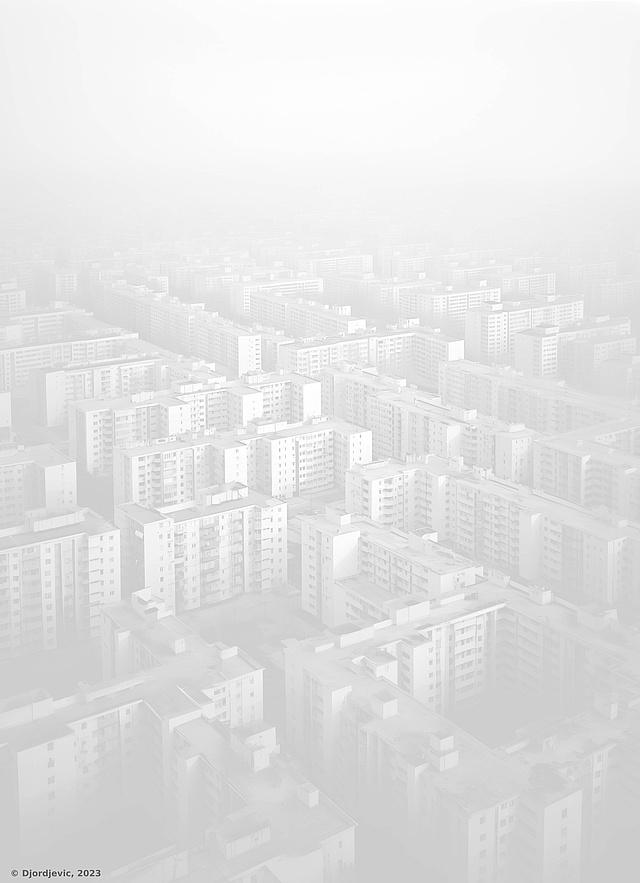The future of modernist housing estates.
The “Refurbish vs. Replace” dilemma in the context of urban densification and the European Performance of Buildings Directive (EPBD)
Aleksandar Tepavcevic, Dipl.-Ing.
Status: completed
Supervisor: Prof. Brian Cody
Abstract
The primary goal of this dissertation was to investigate the contrasting approaches of refurbishment and replacement concering modernist housing estates, amidst the challange of urban densification and the imperative for heightened sustainability. The study's findings shed light on which policy delivers greater environmental benefits, and provides insights into the potential role and position of modernist housing estates in future urban landscapes.
Building on the established "Refurbish vs. Replace" assessment framework, this research extends the environmental component by integrating densification and sustainability factors as control mechanisms within the boundaries of the comparative framework. At the center of the methodology is the life cycle assessment (LCA), which was supplemented by additional preparatory steps and calibrated to be consistent with global guidelines and practices. These steps included compiling design standards, developing building materialization and urban densification concepts, and ensuring that competing refurbishment and replacement scenarios reflect contemporary sustainability practices. By progressively increasing the volume of construction, the methodology aimed to assess the carbon neutrality of proposed solutions at various checkpoints, thereby highlighting the maximum energy-neutral design limits achievable with current technological advances. These checkpoints also served as a reference basis for the comprehensive LCA of the two respective initial scenarios.
The methodology was tested using two different approaches to creating scenarios (preservation vs. demolition) on an exemplary property in Nordweststadt in Frankfurt. However, the specific approach to the design of the geometry and the presentation of the results means that the results can be applied to the entire modernist housing stock in Germany.
The results have shown that the refurbishment option predominates in all the density points examined. A sensitivity analysis, which takes into account the expected reductions in operational and embodied carbon emissions and depicts a hypothetical situation of a fully decarbonized grid after 2050, underlines the superiority of refurbishment and emphasizes the importance of minimizing future embodied energy.
Completion
2024
Focus
An environmental impact assessment and a comparison of the carbon and energy intensity of different densification scenarios based on the principles of reuse and replacement of existing building stock.
Hypothesis
The Energy Performance of Buildings Directive (EPBD), which serves as the central document for regulating the environmental performance of the construction industry, stipulates a nearly zero-energy building standard (nZEB) for all new buildings from 2020. It also suggests that the same standard should be applied to refurbishments. Advances in building materials and construction systems have facilitated the creation of zero-energy buildings, both for new builds and for retrofitting existing buildings.
Modernist housing developments represent a primary portfolio of retrofitted housing stock that meets the nZEB standard, which puts them in an ambivalent position. They can evolve into nZEB neighborhoods by either being extensively refurbished or demolished to make way for better replacements. Against this background, the question arises as to which of the two approaches is the more suitable. The researchers concluded that when comparing refurbishment and replacement options with the same energy labels, refurbishment is generally preferred due to the lower investment in gray energy. However, the ongoing pressure for urban densification is forcing the bar to be raised from the building level to the city level, where the role of grey energy, particularly due to the additional construction volume, will once again become a decisive factor when comparing the environmental footprints of the two approaches.
Key Question
Compared at a level of an urban block and at equal density rates, which of the two approaches - REFURBISHMENT or REPLACEMENT of modernist housing estates, has a better environmental balance over a 50-year LCA period, and (how) does the factor of density increase affect the final decision?
Goal
The goal of this thesis is to develop a methodological framework around the environmental factor of the refurbish vs. replace dilemma which will help ascertain whether modernist housing estates deserve a place in the sustainable cities of the future.

